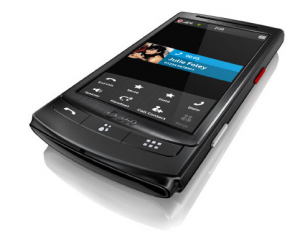 The hardware business is a tough one. And in the smartphone space an incredibly crowded, expensive and competitive one.
The hardware business is a tough one. And in the smartphone space an incredibly crowded, expensive and competitive one.
It’s perhaps noble then that Vodafone tried but ultimately failed with its bespoke Vodafone 360 handsets, which were based on the LiMo operating system and manufactured by Samsung. The mobile operator announced this week that while its “360” suite of mobile services would live on, it was getting out of the handset business. The upcoming Samsung H2 has been canceled.
I’m not surprised.
The original flagship Vodafone 360 smartphone, the H1, was like many a first version, an unfinished product. It was buggy, had a sub-par web browser and while its social networking integration was ambitious (for the time) and generally worked quite well, the overall user experience had to be judged in the shadow of Apple’s iPhone. Partly because of the H1’s “me too” all touch screen slate form-factor. And partly because of the way Vodafone sales reps pushed the device, in the UK at least since at the time of launch the network didn’t have the rights to sell Apple’s smartphone.
How do I know this?
Because I’ve watched one teenager’s day-to-day experience with the Vodafone 360 H1 and it wasn’t pretty. After months of living with the device and really putting it through its paces (incidentally, I completely crashed the phone the first and only time I touched it) said person declared last month “I’ve had enough, I’m taking it back”. At which point, knowing it was well past any grace period, I wished them luck.
So where does this leave Vodafone’s 360 services strategy?
In a mess.
Whilst those services will live on – the social networking savvy ‘converged’ address book, the cloud backup of the phone’s content, the app store etc. – the Samsung H1 was designed as a showcase for 360 and by Vodafone’s own marketing, deemed to be “the ultimate 360 experience”. In other words, elements of 360 showing up on other manufacturers’ phones – Nokia, Android etc. – doesn’t quite cut it.
And it’s arguably a lot harder to execute on that vision if you don’t control both the hardware and software, and certainly a lot more difficult to distinguish your offering from those of competitors, which is partly what 360 was/is trying to do.
But there’s another motivation at play: 360 is ultimately about Vodafone trying to maintain its ownership of the customer and distinguish its wares from the competing platforms it carries. Instead of the customers relating to hardware brands or mobile OSes, they are supposed to instead ask “is it a Vodafone?” and “does it support 360”. The anti-Apple as it were.
And without its own shiny bespoke hardware, relying instead on a bunch of disparate services alone, that’s asking an awful lot.

February Calendar 2018 Printable
cantik. Setelah berbulan-bulan hidup dengan perangkat dan benar-benar meletakkannya di langkahnya (kebetulan, saya benar-benar crash ponsel pertama dan satu-satunya saat saya menyentuhnya)
iykjyx
qszkqb
gipfzi
Home Improvement, Kitchen Appliances, and Electronic appliances are cheap at Homedepot Store. Get $5000 from the Homedepot survey https://www.homedepotcomsurveyss.com/
fjgon0
nvb26l
y7pxr2
63cq5v